Contents
Potatoes are the staple food of the inhabitants of Our Country. There are more than a thousand varieties adapted for cultivation in both warm and cold climates. In order for potatoes not to go out of the diet all year round, it is important to store them properly. If you create appropriate storage conditions for potatoes, then it will not lose its taste for 8-10 months.
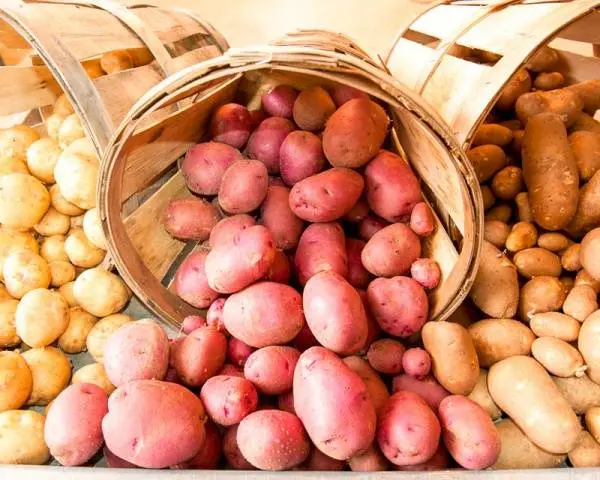
This article will discuss how to properly organize the storage of potatoes and what rules should be followed.
When to Harvest Potatoes for Winter Storage
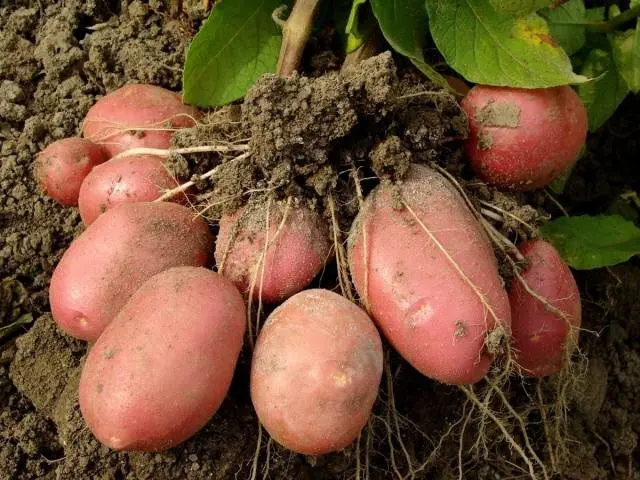
In the process of growing potato tubers, many gardeners use the young crop for daily cooking. However, it is impossible to collect young potatoes for winter storage, as they will simply deteriorate ahead of time. Only well-ripened potato tubers are suitable for winter storage. In order for the root crop to be preserved until the new harvest, some measures should be taken:
- A crop suitable for storage begins to form when the lower leaves of the green mass of the potato dry out. From the day the lower leaves wither to the full ripening of the tubers, 3-4 weeks pass. This period is enough for the tops to die off and the roots to saturate with starch and other nutrients that give the potato flavor. The taste and aroma of tubers depend on the variety of potatoes.
- To make it easier to dig up ripe root crops, harvest and burn the tops 1-2 weeks before harvest. During this time, the tubers will finally ripen, the peel will coarsen and dry eyes will form.
- Digging up potatoes is best done in dry, sunny weather. So, the tubers will dry out in the sun, it will be easier to sort them and dry them in the shade. In addition, in dry weather, you can harvest without clay adhering to the tubers, as a result of which the shelf life of potatoes will increase.
- In warm and dry regions, the full maturation of tubers takes place in the ground. In the colder parts of the country, potatoes are dug up depending on the weather and air temperature.
- As a rule, early varieties are dug up in mid-July – early August. Medium varieties – from August 10 until the end of the month. And late varieties are harvested in storage in the first half of September.
If this is not done, then the tubers will be filled with moisture, as a result of which their shelf life will decrease. Conversely, in a dry summer, potatoes can lose too much moisture, causing them to become too soft.

If you do not grow potatoes, but buy them and store them in the winter, then it is better to purchase a root crop of one variety. It is worth noting that yellow varieties of potatoes are stored better. If you decide to purchase several varieties of potatoes, then each variety must be stored in a separate container.
Preparing potatoes and premises
Before placing the potatoes in their storage place, you need to prepare the tubers. Properly prepared potatoes keep longer and retain their taste until the next harvest.
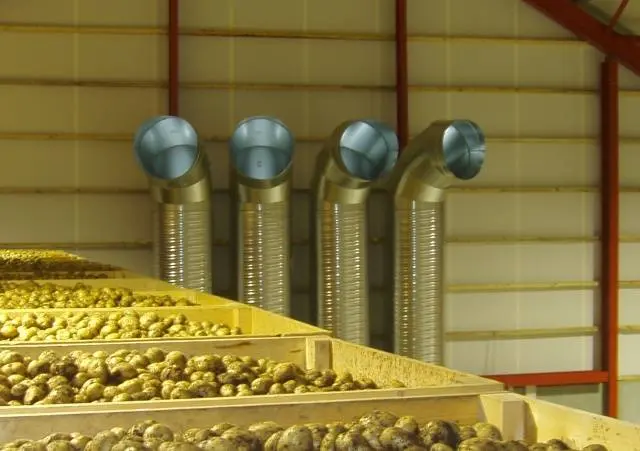
So, root crops must go through several stages of processing:
- Sorting, during which damaged tubers are selected.
- Cleaning of soil and vegetation residues.
- Drying.
- Disinfection. Disinfection can be done with freshly slaked lime. The proportion will be as follows – 10 kg of lime is added to 2,5 liters of water.
- Okurivanie.
Before filling potatoes in the cellar, you need to prepare it too. It depends on how efficient the storage of potatoes will be. So, you need to carry out the following manipulations:
- Inspection of the premises in order to detect damage to the floor and walls.
- Carrying out disinfection.
- If there is damage, then they need to be repaired.
- Repair equipment to ensure proper ventilation and temperature.
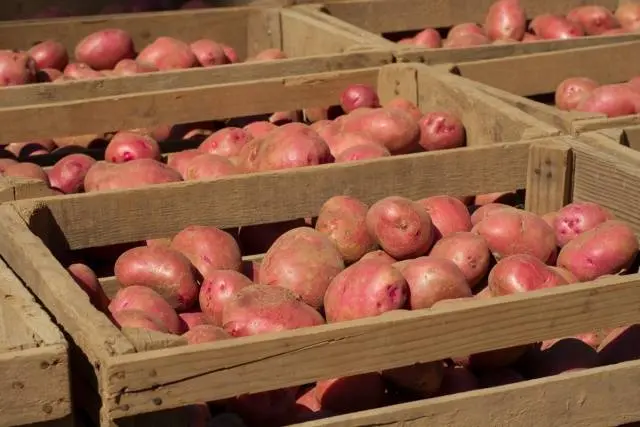
Proper preparation of root crops and the room in which they will be stored will ensure ideal storage of potatoes until the next harvest. It is important to avoid situations that provoke rotting or germination of the root crop in storage.
Temperature conditions
So that the storage of potatoes does not end in a fiasco, you need to determine what the temperature in the cellar / basement should be. So, for different varieties you need a different temperature regime:
- Early varieties are stored at a temperature of 1,4-2,5ºС.
- Mid-early varieties are better stored at a temperature of 3-4ºС.
- Late and mid-late varieties can be stored at higher temperatures – 5–6ºС.
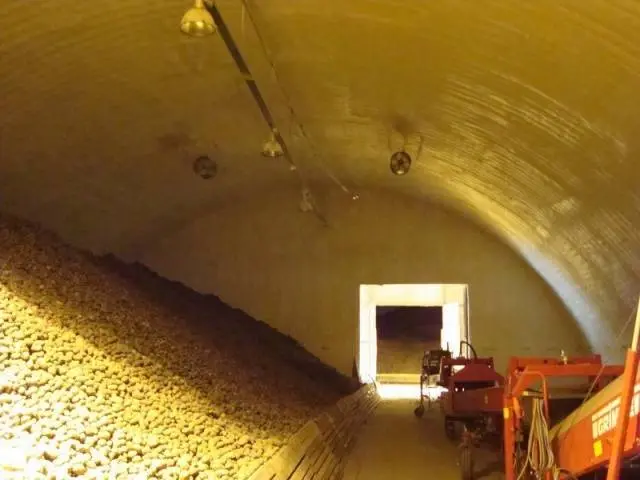
In this room, the potatoes should stand for 2 weeks. After this time, the taste of the root crop should be restored.
Where is the best place to store potatoes?
Where people don’t store potatoes. It all depends on the place of residence of a person, therefore, the methods of storing potatoes will be different. If you live in the private sector, then most likely your potatoes will be stored in the cellar. If you live in an apartment, you can store potatoes either in the basement or on the balcony. Let’s consider each storage method separately.
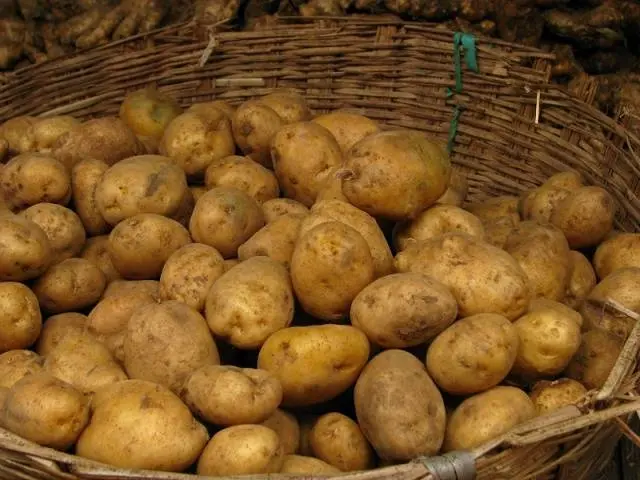
First of all, it is worth talking about stationary storage places for potatoes. In such rooms, it is possible to adjust the climatic conditions that provide the optimal storage mode. So, there are 3 types of potato storage:
- Terrestrial.
- Semi-recessed.
- Fully recessed.
Fully recessed cellars are considered the most practical. In the spring, they retain the necessary coolness, while in winter such storage facilities do not freeze through. If it is possible to organize the storage of potatoes in an underground cellar, then this gives you an almost 100% guarantee of the safety of the root crop until the next harvest.
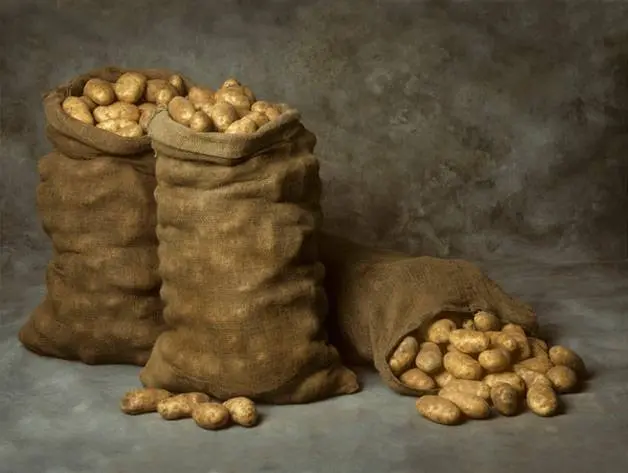
If, during the construction of the cellar, the level of groundwater occurrence is taken into account, then the cellar in the ground will be the most effective room for storing root crops. The bottom of the storage should be 2 m above groundwater.
Pit for storing root crops
If you do not have a cellar, then the potato storage technology will naturally differ from that described above. One option is to store potatoes in a pit specially prepared for this. It can be dug in the garden or in an outbuilding. A pit under a shed or in a shed is a better option for storing potatoes than in a vegetable garden. So, you can quickly create the conditions necessary for storing potatoes.
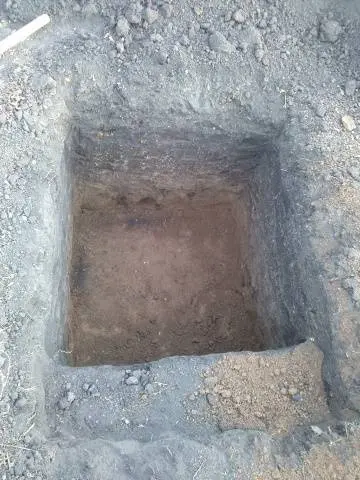
Before you start digging a hole, it would be good to determine what type of soil you have to work with, since this factor is important to consider when digging. So, the process of preparing the pit consists of the following steps:
- Digging a hole 1,5 m deep and 2 m in diameter.
- Preparation of grooves for the outflow of groundwater.
- Lining the walls and bottom with straw.
In order for the potatoes to lie in the pit until the end of spring, you need to know how to properly store the root crop in this storage. Potatoes need to be poured into the prepared pit, not reaching the top by 40–50 cm. The remaining space is covered with straw, and then sprinkled with earth. This method of storage is called bulk.

However, not all varieties of potatoes can be stored in this way. Therefore, before deciding whether to store potatoes in this way, make sure you grow or buy the right variety.
Storage in the cellar
Cellars are underground, semi-buried or ground. It all depends on the level of groundwater. A cellar built of concrete or red brick is suitable for storing potatoes.

Ventilation should be done in such a way that the temperature in the cellar is maintained in the range of 2-6ºС, and the relative humidity varies between 80-90%. To do this, two pipes are installed in the cellar – supply and exhaust.
balcony storage
If you live in an apartment, then you probably do not have a cellar. Perhaps you have a basement, but if there are no proper conditions for storing the root crop, then the only storage may be a balcony or loggia. Since the temperature in this room is below zero in winter, it will not be possible to store potatoes in a simple bag or box.
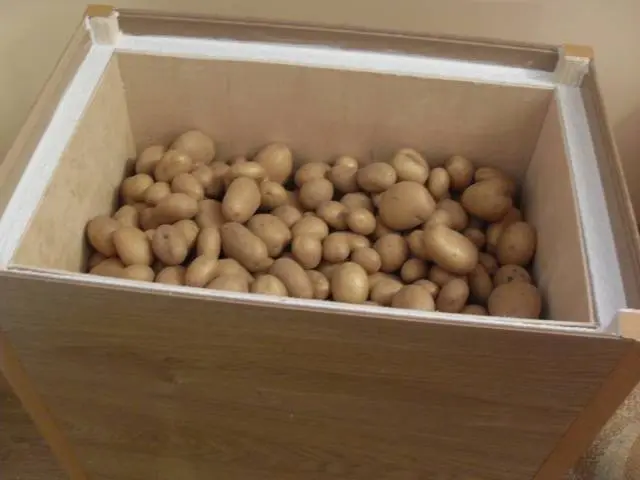
Some home craftsmen resorted to a little trick and simply insulated ordinary boxes with foam plastic, and lined them with clapboard inside. Some installed a chimney in the box and organized heating in the form of a blue light bulb with a power of 40 watts. Such storage for potatoes has decent performance.
If you do not have the opportunity to make storage boxes yourself, then you can purchase a Balcony cellar household thermal container. It is a double bag, which is made of tent fabric, insulated with durable synthetic winterizer and equipped with electric heating. Such a thermal container ensures the safety of vegetables on the balcony even at -40ºС, since the temperature in it is always maintained within +1 + 7ºС. Moreover, the container works automatically.

Results
So, storing potatoes in suitable conditions, you can provide your life with delicious dishes from this vegetable. This article has described the main types of storage for potatoes, and also provided tips on how to process the vegetable before it is stored. Choose one of the options, and let there always be potatoes in your house!
Another way to store potatoes at home is covered in the video:









